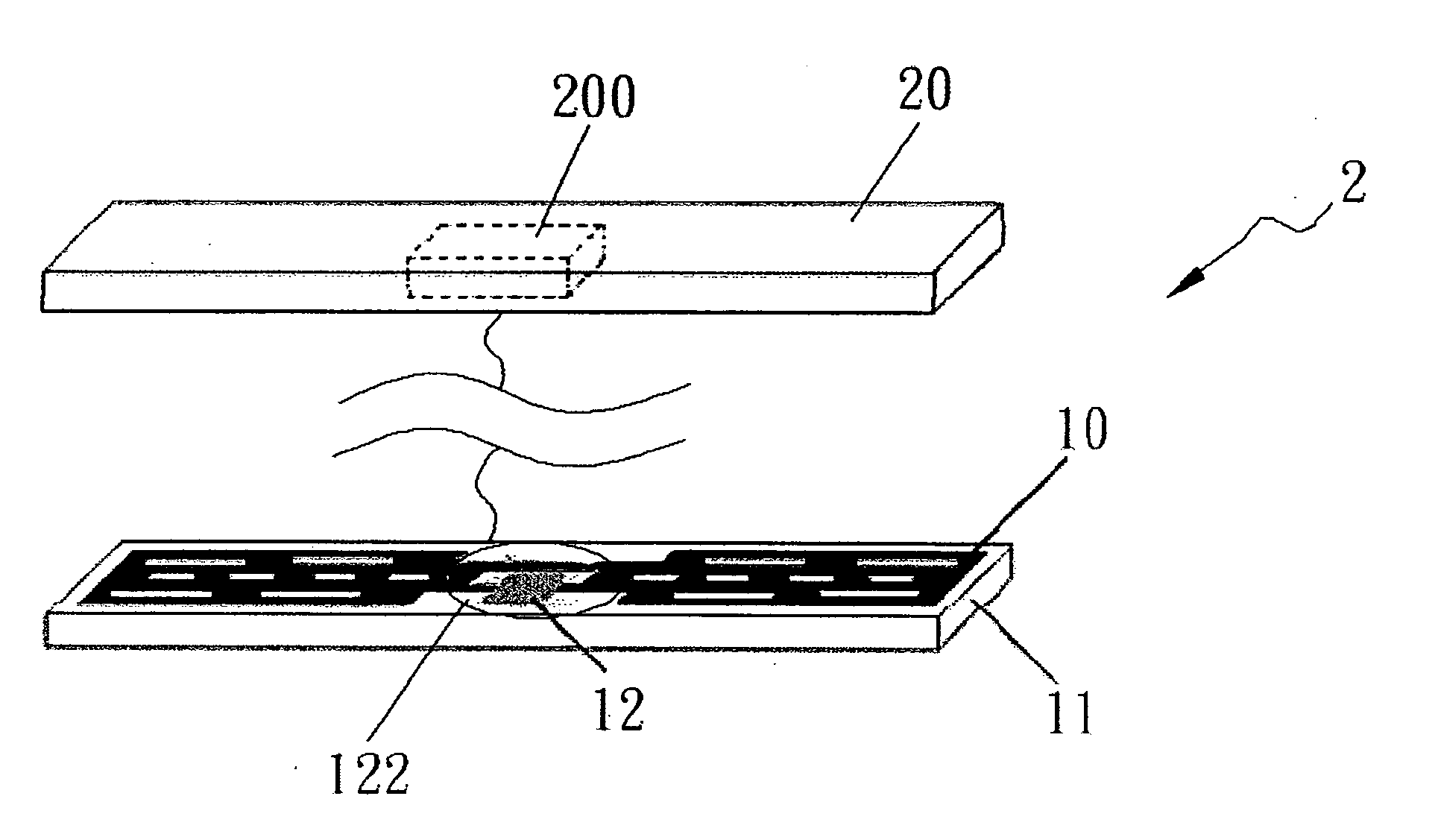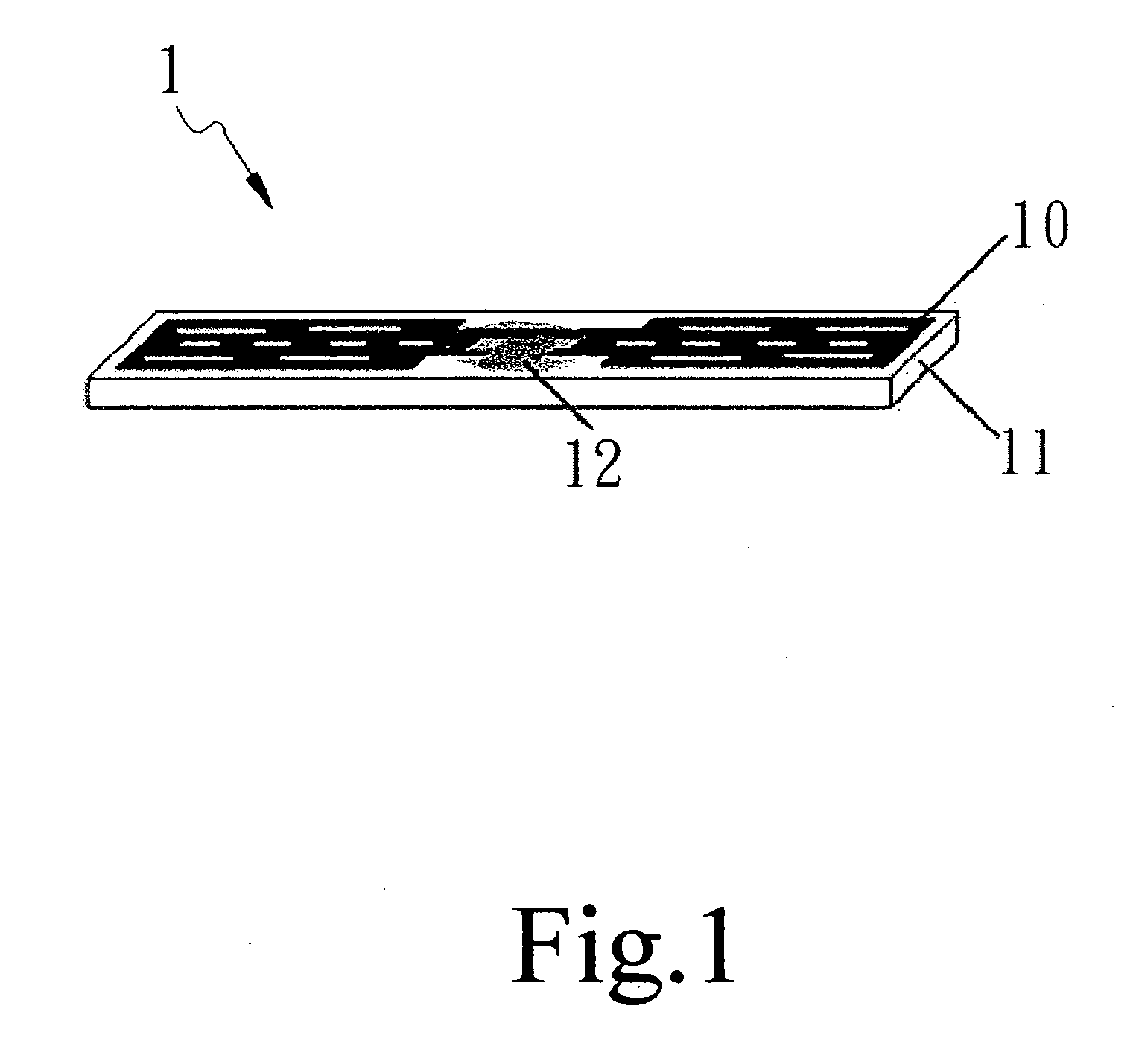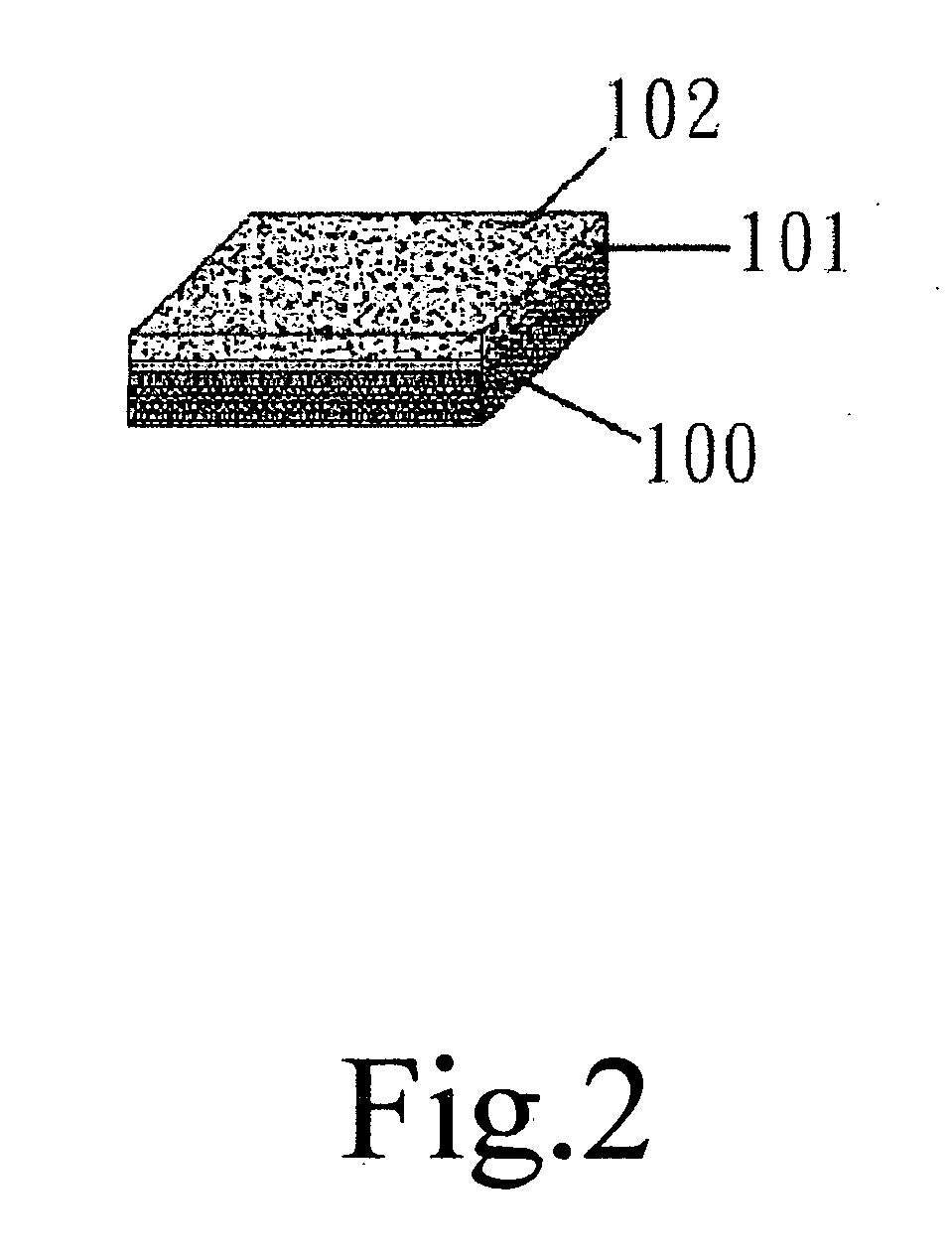Label of radio frequency identification by thermal transfer printing antenna
a radio frequency identification and thermal transfer printing technology, applied in the direction of resonant antennas, burglar alarm mechanical actuation, instruments, etc., can solve the problems of inability to be used repeatedly and updated, easy to be damaged by foreign forces, and high cost, so as to achieve quick mass production and reduce cost
- Summary
- Abstract
- Description
- Claims
- Application Information
AI Technical Summary
Benefits of technology
Problems solved by technology
Method used
Image
Examples
Embodiment Construction
[0017] As shown in FIG. 1, a preferred embodiment of a thermal transfer printing antenna RFID label by a thermal transfer printing 1 in the present invention includes mainly an antenna 10, a RFID antenna substratum 11 and a RFID chip 12. Their related technologies are described as below.
[0018] As shown in FIGS. 2 and 3, for making a thermal transfer printable conductive metal foil 15, a carrier 100 is first coated with a isolated layer 101 and then, plating the metallic solution on the isolated layer 101 by means of vacuum plating, thus forming a conductive metal foil 103, which is successively coated with a glue 104 to make a thermal transfer printing conductive metal foil 105 The carrier 100 is used as a substrate for vacuum plating. The isolated layer 101 is located between the carrier 100 and the metal foil 102, enabling the metal foil 102 to be peeled off the carrier 100 easily. Thus, the metal foil 103 is constituted as shown in FIG. 2. The glue layer 104 is an adhesive to co...
PUM
| Property | Measurement | Unit |
|---|---|---|
| conductive | aaaaa | aaaaa |
| shape | aaaaa | aaaaa |
| mass | aaaaa | aaaaa |
Abstract
Description
Claims
Application Information
 Login to View More
Login to View More - R&D
- Intellectual Property
- Life Sciences
- Materials
- Tech Scout
- Unparalleled Data Quality
- Higher Quality Content
- 60% Fewer Hallucinations
Browse by: Latest US Patents, China's latest patents, Technical Efficacy Thesaurus, Application Domain, Technology Topic, Popular Technical Reports.
© 2025 PatSnap. All rights reserved.Legal|Privacy policy|Modern Slavery Act Transparency Statement|Sitemap|About US| Contact US: help@patsnap.com



